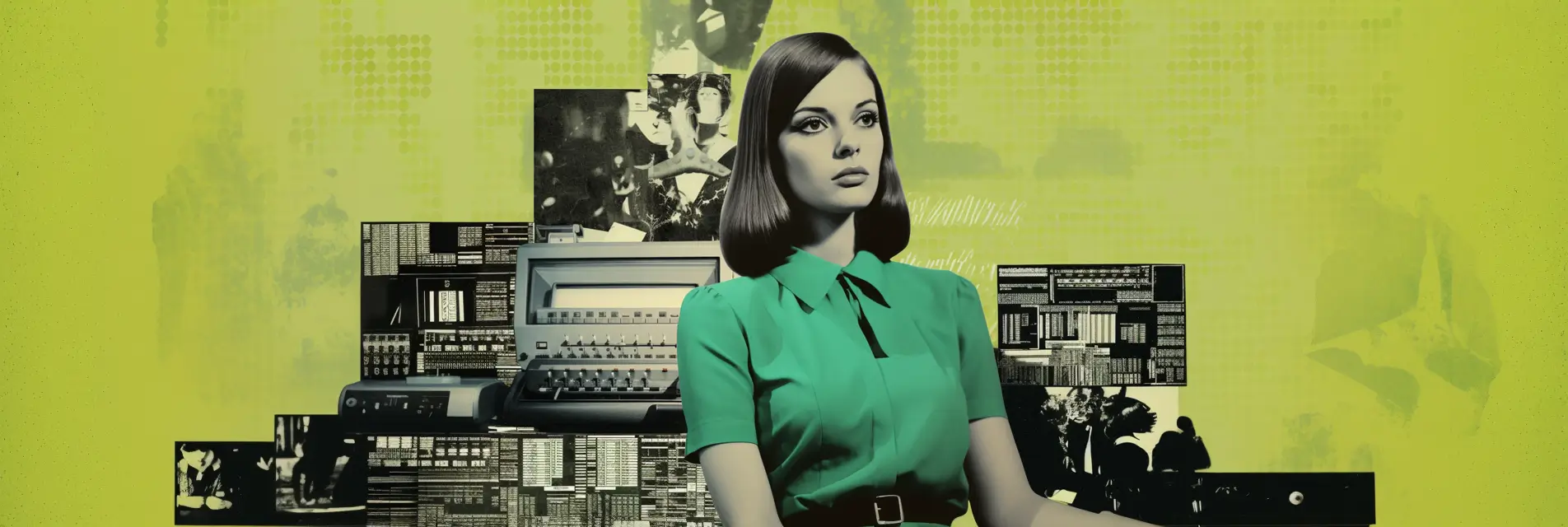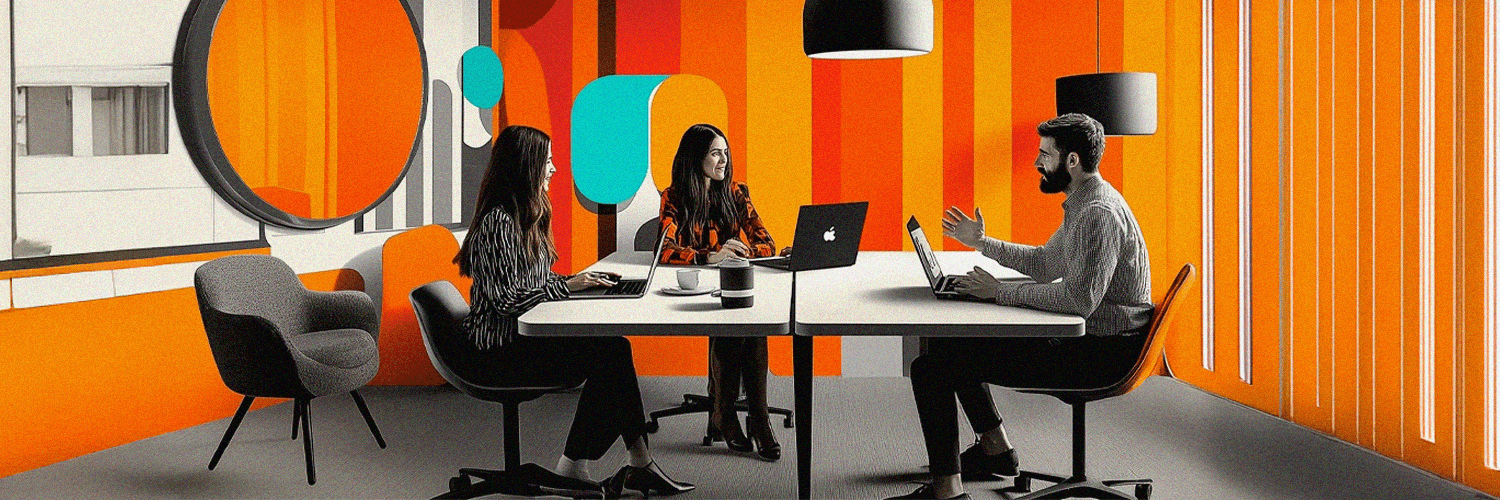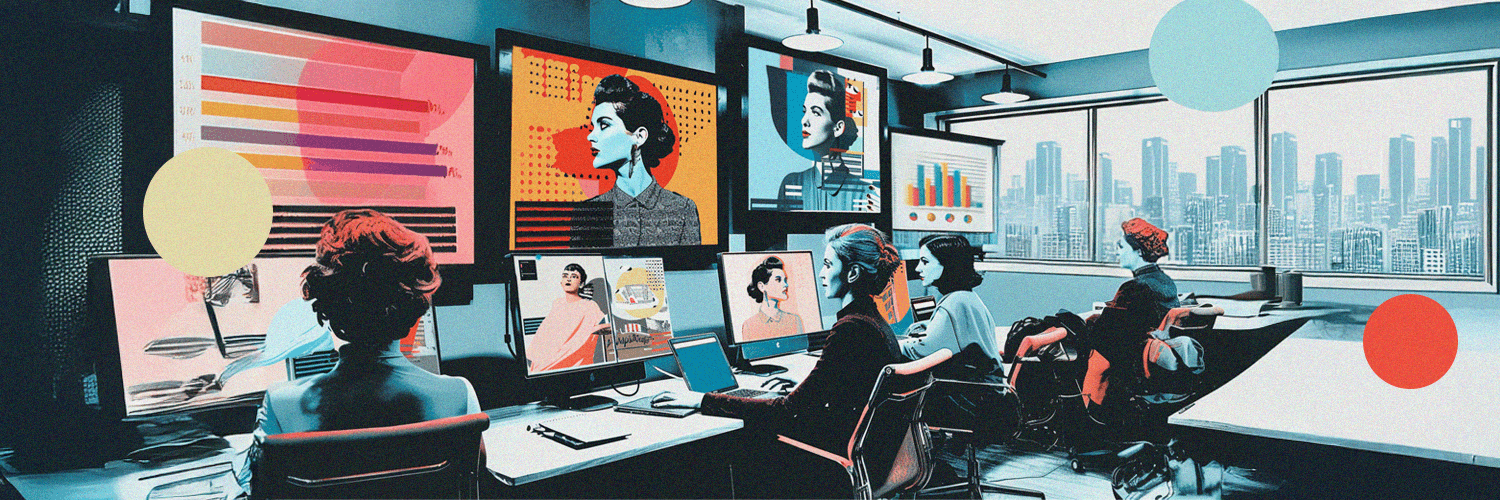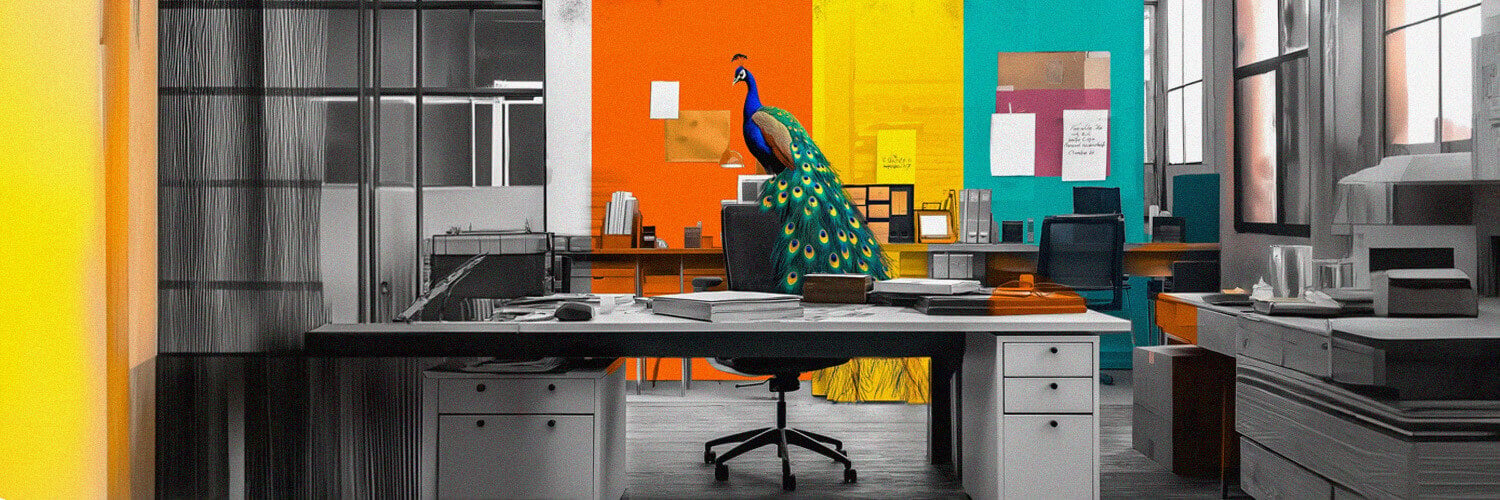What’s “outdated”? Some call it old-fashioned, out of style or just obsolete – subjective or not. When adding more substance to the definition, “outdated” refers to “something that is no longer in use, relevant, or considered applicable due to the development or advancement in technology, style, ideas, methods or systems. It describes anything that has fallen out of current trends, practices, or norms and is usually replaced by newer, more effective or efficient versions or alternatives.” Now apply that to your workplace and evaluate. Are there signs that it might become outdated? How can you make an objective assessment of how it will transform?
In the fast-paced contemporary world, workplaces have shifted from static environments to dynamic and flexible spaces, catering to the evolving demands of the modern workforce. This article gives you the tools to evaluate whether your workplace is on the flexible side of the story or the slowly-but-surely no-longer-relevant one.
TL;DR:
- Recognizing the signs of an outdated workplace is crucial for organizations aiming to thrive.
- The fusion of well-managed strategies, thoughtful workplace design, and cutting-edge technology shapes the foundation of a modern and connected workspace.
- From embracing flexible work options to integrating advanced communication tools, modern workplaces prioritize the integration of technology into everyday tasks, thereby propelling collaboration and innovation.
- Organizations must re-imagine the office's role as a hub for collaboration, creativity, and relationship-building.
- By harnessing management strategies, collaborative design, and advanced technology, organizations pave the way for a vibrant and connected workspace that empowers teams to succeed.
Ever-Changing Workplaces
Thanks to the rise of remote and hybrid work models, workplaces are no longer confined to physical boundaries. As technology continues to advance, employees are enabled to work from anywhere, whether it be from the comfort of their homes, traveling the world, or from an office. To stay on top of these trends, organizations must ensure that their workplaces are not falling behind, as an outdated workplace can have a significant impact on employee productivity, engagement, and overall satisfaction.
While remote work offers a valuable advantage by eliminating commuting challenges and allowing employees to invest that time in enhancing work productivity and personal well-being, the hybrid work model – which has become the “new normal” – presents the compromise of blending remote flexibility with in-person interaction. However, while these models provide numerous benefits, they introduce communication challenges. To address them, organizations are turning to technology to foster seamless collaboration among remote teams.
As workplaces continue to evolve, organizations must embrace change and create a dynamic and inclusive work environment that meets the needs and preferences of their employees. In other words, they must make sure they don’t become outdated. But how can one read the signs?
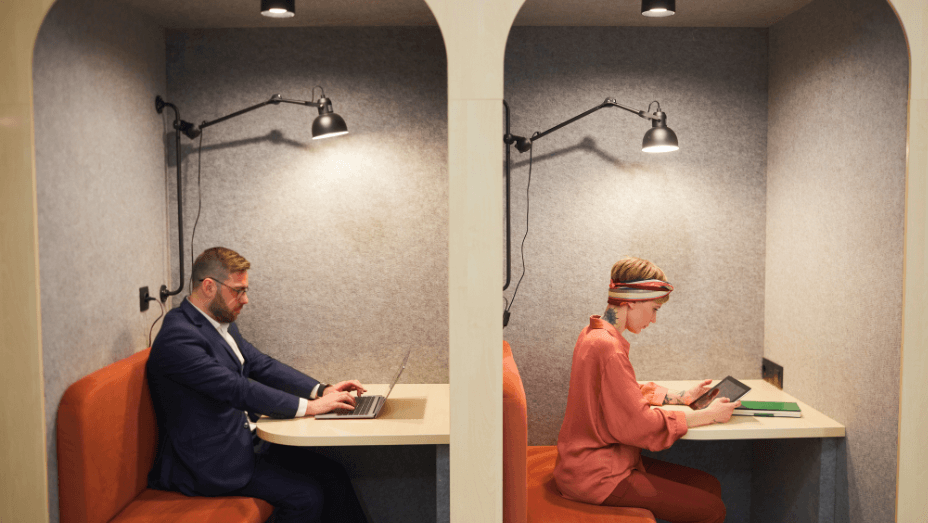
Signs of Outdated Workplaces in the Era of Hybrid Work
There are many signs that indicate an outdated workplace, particularly in the era of hybrid work.
- The most obvious is the lack of flexible work options. If your company still adheres strictly to traditional work hours and rigid schedules, it may be time to reconsider your options. Employees today value flexibility and autonomy in managing their work-life balance, which results in increased job satisfaction and overall well-being. Additionally, companies that embrace flexible work arrangements often see improved employee retention rates and higher levels of productivity.
- Another sign of an outdated workplace is the absence of modern technology. As communication and collaboration tools continue to advance, it's essential for organizations to enable employees to do their jobs effectively. Outdated technology not only hampers productivity but also creates frustration among employees who are used to seamless digital experiences. In contrast, forward-thinking companies invest in seamlessly integrated technologies that enable better collaboration, such as: video conferencing platforms, project management software, cloud-based storage systems, and others.
- Modern workplaces prioritize the integration of technology into everyday tasks. For example, automation tools can streamline repetitive processes, freeing up employees' time to focus on more strategic and creative aspects of their work. This not only enhances productivity but also empowers employees to contribute more meaningfully to the organization's goals.
- Furthermore, outdated workplaces often lack opportunities for employee growth and development. In the era of hybrid work, it's crucial for organizations to invest in continuous learning and upskilling programs, thus allowing employees to stay relevant in a rapidly evolving work landscape and the company to remain competitive. For example, forward-thinking companies prioritize employee development by offering various training programs and mentorship opportunities and by fostering a culture of continuous improvement and innovation.
- How about decision making? Clinging to a top-down decision-making structure without valuing input from all levels of the organization can signal an outdated leadership style. In the hybrid work era, inclusivity and collaboration are key; involving employees in decisions can foster a sense of ownership and alignment with the organization's goals.
- Resistance to change serves as a definitive sign of an outdated workspace, particularly in the context of the hybrid work era. This resistance stifles progress, limits opportunities for innovation, and may lead to diminished employee morale, ultimately impeding the organization's ability to thrive in a modern and evolving work environment.
Recognizing the signs of an outdated workplace in the era of hybrid work is essential for organizations to thrive. And to do so, they must also prioritize communication and collaboration, creating an inclusive work environment to drive success.
Communication and Collaboration Set Modern Workplaces Apart
Successful modern workplaces encourage effective communication and collaboration. In the era of hybrid work, organizations need to provide seamless channels for remote teams to connect, share ideas, and collaborate in real-time. But in today's twisted digital world, communication should go beyond just exchanging information. Modern workplaces need to understand the importance of fostering meaningful connections among employees. Creating a sense of community and belonging, even in virtual settings, is what sets an organization apart.
Leveraging technology to enhance collaboration is a must. Investing in digital tools that enable seamless file sharing, real-time document collaboration, and project management eliminate the barriers of time and location, allowing teams to work together efficiently, regardless of their physical proximity.
Additionally, modern workplaces who emphasize collaborative spaces are set to winning employees’ hearts. Embracing open floor plans, comfortable breakout areas, and designated collaboration zones to encourage interaction and idea sharing among employees are elements that shape the future of work.
Organizations should also think of ways to break silos apart by recognizing the value of diverse perspectives and interdisciplinary collaboration. Instead of isolated departments, modern organizations should encourage cross-functional teams to work collaboratively, creating opportunities for enhanced creativity and a culture of knowledge sharing.
There is a new role that the office must play so that organizations remain anchored in the reality of the workforce trends. Let’s see what that is.
The New Role of the Office
The traditional office space is no longer the center of productivity for many organizations. Instead, it has transformed into a hub for collaboration, brainstorming sessions, and social interaction.
"As someone who works in a hybrid team, I make the choice to come into the office when it's necessary for specific tasks or projects that require face-to-face collaboration and communication with my team members.”
Organizations are reimagining their office spaces to accommodate this new role. Flexible workstations, comfortable lounges, and inspiring meeting rooms are becoming the norm. These collaborative spaces are designed to cater to different work styles and preferences and boost productivity, creativity and collaboration.
“Additionally, I come into the office when I need access to certain equipment or resources that are not available when working remotely. I find that working in an office setting provides structure and routine for me, which helps to increase my productivity.”
While the hybrid work era has redefined the office as a collaboration and communication hub, emphasizing its role in fostering meaningful connections, promoting teamwork, and nurturing a vibrant work culture, these aspects cannot be overlooked in the virtual realm. Why?
The Virtual Dimension
The virtual dimension adds a transformative layer to the modern workplace, highlighting the growing importance of digital connectivity and remote interactions. The virtual workplace encompasses digital tools, platforms, and practices that enable remote work, virtual meetings, and online collaboration. Even as offices facilitate face-to-face interactions and foster innovation, the virtual dimension complements and extends these capabilities. It offers a dynamic space where remote team members can engage in real-time communication, contribute to discussions, and collaborate on projects, ensuring inclusivity and intelligence sharing.
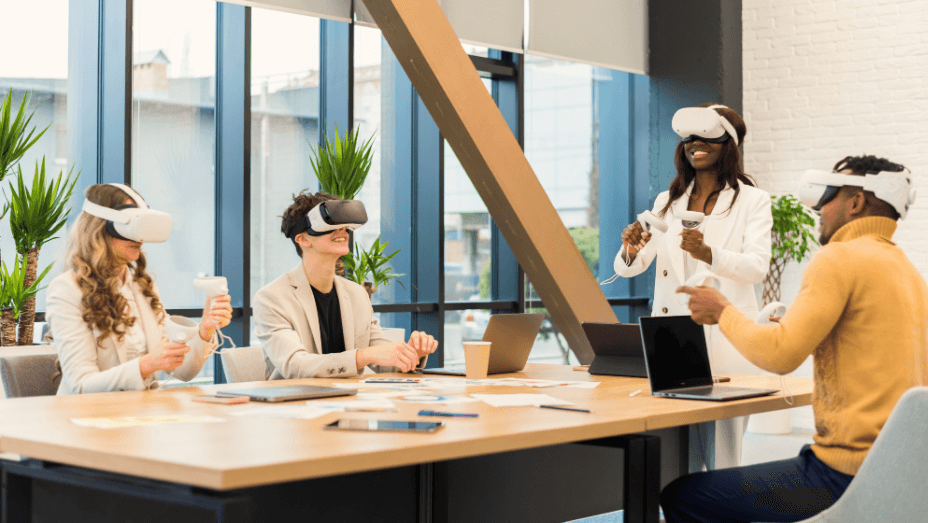
Do You Have What It Takes to Connect Your Teams?
As the workplace continues to evolve, it's essential for companies to adapt and invest in the tools and strategies that promote connectivity among teams. Some of them can be:
Management
Effective management lays the foundation, involving clear communication of expectations and objectives to facilitate seamless collaboration. Skillful management encompasses aligning team goals with organizational objectives, ensuring clear communication of expectations, and providing regular feedback. Managers need to foster an atmosphere where team members feel valued and supported, encouraging open dialogue and active participation, and promoting a sense of belonging.
Employee Experience Management
Acknowledging the importance of employee experience management is essential to enable team connectivity. Organizations must keep their employees happy, engaged, and productive throughout their time working, creating pathways for professional development, promoting work-life balance, addressing well-being concerns collectively and fueling team collaboration.
Team Coordination
Effective team coordination is a cornerstone of connectivity, demanding an understanding of each team member's role, responsibilities, and strengths. Clear communication channels and well-defined workflows prevent duplication of efforts and promote alignment toward common goals. This can include project management software, instant messaging platforms, and video conferencing tools. By providing the necessary technological infrastructure, management can ensure that team members can collaborate effectively, regardless of their location or time zone. Regular check-ins, both formal and informal, facilitate the exchange of updates, feedback, and insights, enhancing the overall efficiency and cohesiveness of the team.
A Great Work Environment
A conducive work environment significantly impacts team connectivity. Management should lead by example when it comes to collaboration by actively participating in collaborative projects and demonstrating effective teamwork. This can inspire and encourage team members to collaborate and work together towards common goals. Additionally, modern workplaces integrate physical and virtual spaces that accommodate diverse work styles and preferences. Physical spaces feature collaborative zones that encourage spontaneous interactions, while remote work options cater to flexibility. Workplace design is a game changer when it comes to fostering a collaborative working environment.
Design
Central to this connectivity is an intelligently designed workspace that enhances collaboration and visibility. On the virtual front, leveraging collaboration tools and software bridges geographical divides. These tools streamline tasks, versioning, and progress monitoring, enhancing organization and accountability. Designing an aesthetically pleasing virtual workspace adds to a positive team ambiance, with customizable interfaces empowering personalization and fostering deeper collaboration.
Collaborative Office Design
Collaborative office design ensures spaces that encourage interactions, featuring open layouts and communal areas that prompt spontaneous exchanges. Open-plan setups featuring shared workstations, collaborative corners, and breakout zones kindle spontaneous exchanges among colleagues, encouraging unplanned discussions and creative brainstorming. This arrangement fosters a sense of accessibility, with easy visibility ensuring constant awareness of ongoing projects.
Visibility
Through open layouts, collaboration zones, effective signage, and maximizing natural light, teams can easily interact and connect with each other. This design approach extends to virtual visibility, incorporating screens, interactive displays, and hybrid work considerations to ensure remote participants remain engaged. By creating an environment where team members can see and be seen, whether physically or virtually, organizations enable a collaborative spirit to flourish. This design approach promotes the sharing of ideas, seamless communication, and a sense of unity, all of which are vital for thriving in the modern hybrid work era.

Technology
Technology emerges as a logical progression that further amplifies the modern workplace's connectivity. Just as well-designed physical spaces and strategic layouts foster interaction and visibility, technology serves as the catalyst to seamlessly bridge gaps, enable remote participation, and streamline collaborative efforts through real-time document sharing, video conferencing, and other workplace experience platforms.
Workplace Experience Platforms
These platforms introduce a new dimension to connectivity, serving as centralized hubs, consolidating announcements, schedules, and updates. They offer a digital nexus for teams to access vital information, fostering alignment and shared understanding. Communication platforms like Slack or Microsoft Teams provide real-time messaging, video conferencing, and file sharing capabilities. Cloud-based storage systems, such as Google Drive or Dropbox, offer secure and accessible storage for project files. Smart office technologies help manage workplace user experience such as: desk and room booking, visitor management, or a work planning tool will make your workplace interconnected, catering to all your employees’ needs, no matter the location. AI and IoT software will simplify communication between employees in remote workplaces, giving them access to team projects and data.
Interactive Office Maps
Interactive office maps, a subset of these platforms, facilitate navigation in physical spaces, guiding employees to colleagues and resources with ease. These digital maps offer unprecedented customization capabilities that allow for better communication and coordination among colleagues – all while providing insights on space usage to inform future expansions or reconfigurations.
Employee Mobile Apps
Employee mobile apps further strengthen connectivity by enabling engagement and participation regardless of location. These apps allow remote team members to participate in discussions, access resources, and stay informed about ongoing projects, ensuring they remain an integral part of the team even from a distance. Moreover, mobile apps offer a versatile channel for continuous engagement, enabling employees to contribute, learn, and stay connected beyond office walls.
Summing Up
In today's rapidly evolving work landscape, recognizing the signs of an outdated workplace is crucial for organizations aiming to thrive. Workplaces are no longer confined to the traditional, static office spaces of the past. The path to success lies in embracing change, fostering collaboration, and harnessing the power of technology. Whether it's reimagining your office layout, integrating cutting-edge technology, or nurturing a culture of collaboration, the journey to a modern workspace is thrilling. So, take it step by step – explore, innovate, and create a workspace that empowers your teams to thrive in the future of work!
